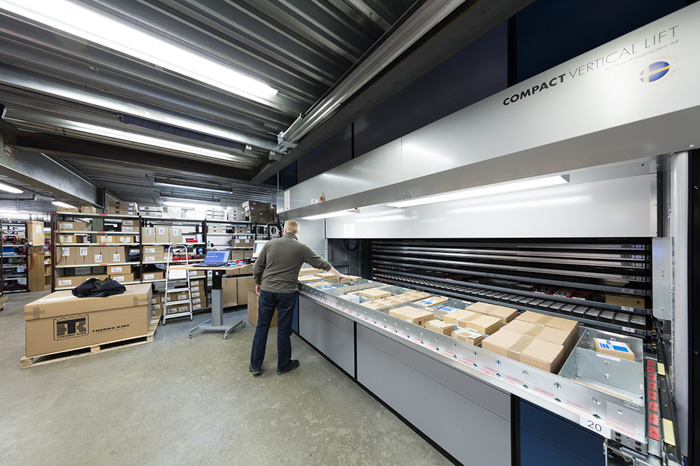3 Steps to Consider While Researching Your Options
Vertical lift modules (VLMs) increase productivity by helping companies use warehouse space more effectively and improve inventory management. But in order to maximize these benefits, it is critical to choose the VLM that is best suited for your storage environment and business goals.
As you research the various intelligent storage options now available, follow these three key steps:
- Identify the problem(s) you want to solve;
- Determine available warehouse space and tray capacity needs;
- Factor in VLM options and features, including service after the sale.

Step 1: Identify the problem you want to solve
The first step in selecting an intelligent storage solution is to determine precisely what business issues you are trying to solve. Do you want to increase throughput? Does picking accuracy need to improve? Could you use more warehouse storage space? In many cases, warehouse managers need updated storage solutions that can help them achieve multiple business goals at once.
Identifying the issues you want to solve helps you narrow the field of applicable storage options. For instance, a VLM provides very dense dynamic storage for items of different sizes and allows operator to retrieve items ergonomically. A horizontal carousel offers extremely fast pick rates but is less flexible, with regard to height, width, and depth of parts.
Step 2: Determine available warehouse space, weight of products to be stored, etc.
A VLM design is typically driven by site location and dimensions of the products needing storage. Because they are oriented vertically, VLMs optimize overhead air space and free up valuable floor space for purposes other than storage. In fact, VLMs require up to 90% less floor space than conventional racking.
VLMs can also maximize storage density by automatically adjusting shelving based on the height of the items being stored. This dynamic allocation of tray heights makes VLMs ideal for companies storing parts or inventory that may vary in height, and it is one of the primary reasons these units have become so popular. Even so, it is also critical to consider the load rating of the shelving. However, due to their size they often have a low pound per square foot (psi) load rating. That means if you need to store smaller heavy items, you may want to opt for a multi-column VLM designed to have a compact tray with a high pound per square foot rating.
Step 3: Factor in VLM options and features, including service after the sale
VLMs can be customized with a variety of different features. Features offered are sophisticated product identifier systems, integrated inventory management software, and multiple operator access openings.
Required pick rates also play a role in selecting a VLM. When a pick rate, in addition to space utilization, is of the utmost importance, a multi-column VLM is often the best approach. Multi-column VLM’s can provide the optimum presentations for an operator in distribution to maximize throughput and minimize operator wait time.
All of our White Systems automated storage and retrieval systems are fully customizable to meet each client’s unique needs. White has its own factory trained service technicians in field offices across the country. You can rest assured that VLM service and scheduled maintenance needs will be met quickly and reliably. We take pride in our VLM hardware and software and celebrate the superior customer service we provide before, during, and after the sale.
